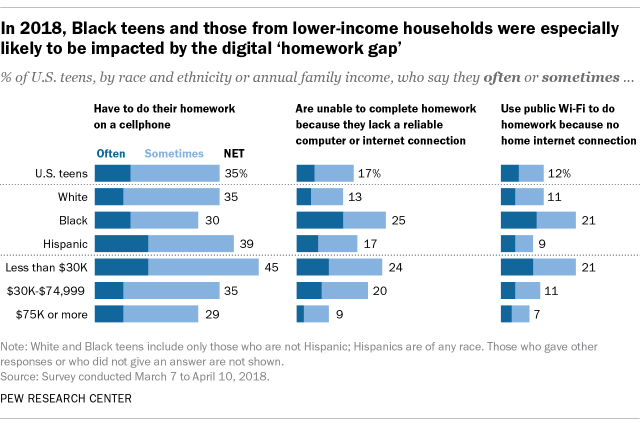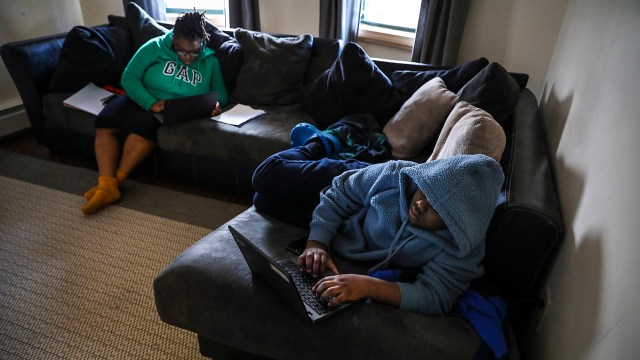
America’s K-12 students are returning to classrooms this fall after 18 months of virtual learning at home during the COVID-19 pandemic. Some students who lacked the home internet connectivity needed to finish schoolwork during this time – an experience often called the “homework gap” – may continue to feel the effects this school year.
Here is what Pew Research Center surveys found about the students most likely to be affected by the homework gap and their experiences learning from home.
Children across the United States are returning to physical classrooms this fall after 18 months at home, raising questions about how digital disparities at home will affect the existing homework gap between certain groups of students.
Methodology for each Pew Research Center poll can be found at the links in the post.
With the exception of the 2018 survey, everyone who took part in the surveys is a member of the Center’s American Trends Panel (ATP), an online survey panel that is recruited through national, random sampling of residential addresses. This way nearly all U.S. adults have a chance of selection. The survey is weighted to be representative of the U.S. adult population by gender, race, ethnicity, partisan affiliation, education and other categories. Read more about the ATP’s methodology.
The 2018 data on U.S. teens comes from a Center poll of 743 U.S. teens ages 13 to 17 conducted March 7 to April 10, 2018, using the NORC AmeriSpeak panel. AmeriSpeak is a nationally representative, probability-based panel of the U.S. household population. Randomly selected U.S. households are sampled with a known, nonzero probability of selection from the NORC National Frame, and then contacted by U.S. mail, telephone or face-to-face interviewers. Read more details about the NORC AmeriSpeak panel methodology.
Around nine-in-ten U.S. parents with K-12 children at home (93%) said their children have had some online instruction since the coronavirus outbreak began in February 2020, and 30% of these parents said it has been very or somewhat difficult for them to help their children use technology or the internet as an educational tool, according to an April 2021 Pew Research Center survey.
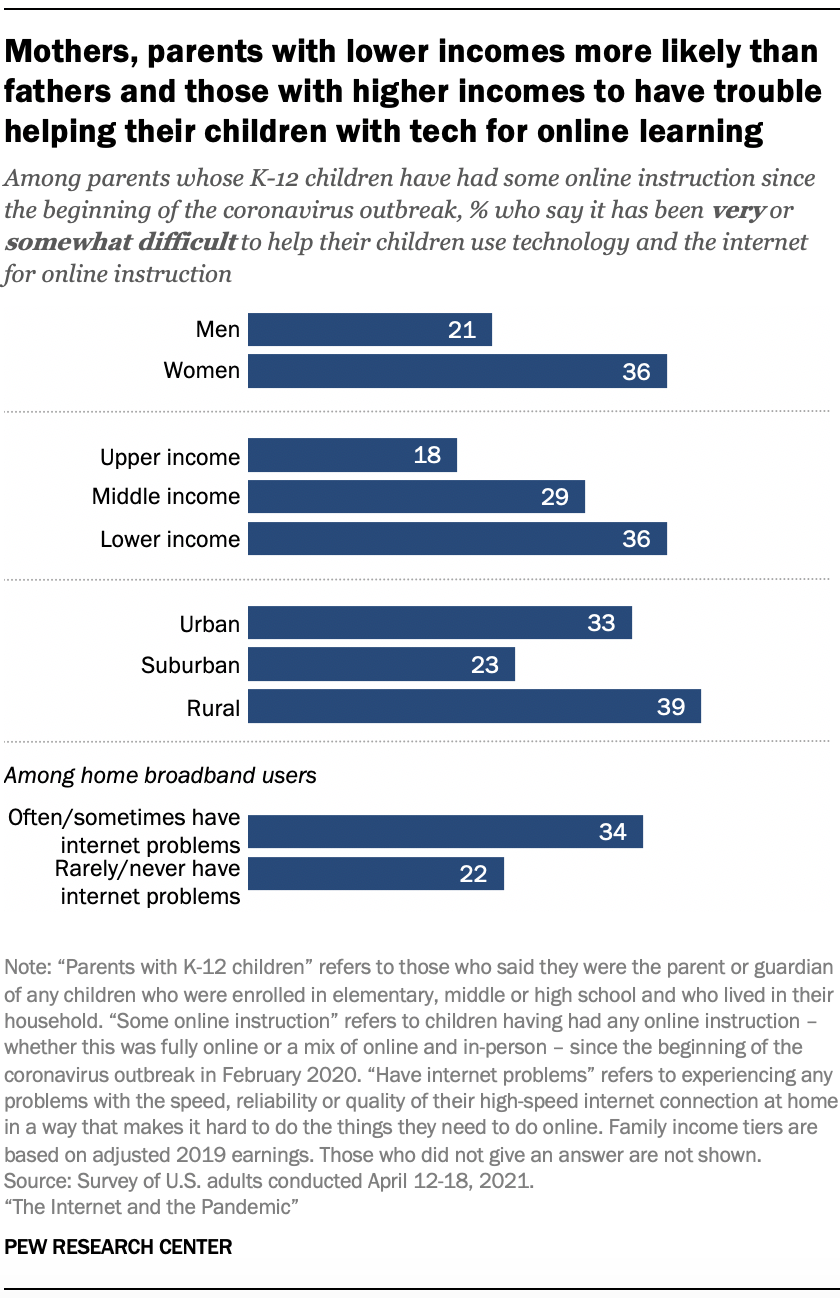
Gaps existed for certain groups of parents. For example, parents with lower and middle incomes (36% and 29%, respectively) were more likely to report that this was very or somewhat difficult, compared with just 18% of parents with higher incomes.
This challenge was also prevalent for parents in certain types of communities – 39% of rural residents and 33% of urban residents said they have had at least some difficulty, compared with 23% of suburban residents.
Around a third of parents with children whose schools were closed during the pandemic (34%) said that their child encountered at least one technology-related obstacle to completing their schoolwork during that time. In the April 2021 survey, the Center asked parents of K-12 children whose schools had closed at some point about whether their children had faced three technology-related obstacles. Around a quarter of parents (27%) said their children had to do schoolwork on a cellphone, 16% said their child was unable to complete schoolwork because of a lack of computer access at home, and another 14% said their child had to use public Wi-Fi to finish schoolwork because there was no reliable connection at home.
Parents with lower incomes whose children’s schools closed amid COVID-19 were more likely to say their children faced technology-related obstacles while learning from home. Nearly half of these parents (46%) said their child faced at least one of the three obstacles to learning asked about in the survey, compared with 31% of parents with midrange incomes and 18% of parents with higher incomes.
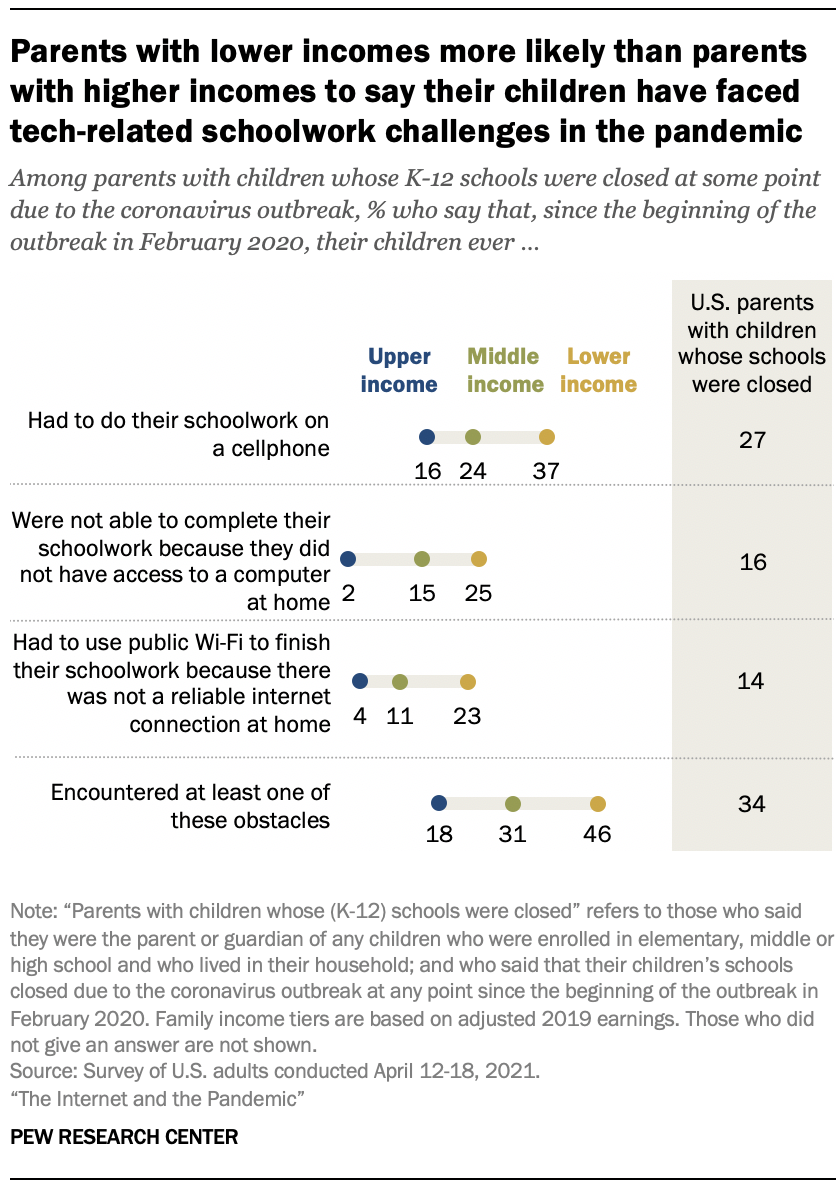
Of the three obstacles asked about in the survey, parents with lower incomes were most likely to say that their child had to do their schoolwork on a cellphone (37%). About a quarter said their child was unable to complete their schoolwork because they did not have computer access at home (25%), or that they had to use public Wi-Fi because they did not have a reliable internet connection at home (23%).
A Center survey conducted in April 2020 found that, at that time, 59% of parents with lower incomes who had children engaged in remote learning said their children would likely face at least one of the obstacles asked about in the 2021 survey.
A year into the outbreak, an increasing share of U.S. adults said that K-12 schools have a responsibility to provide all students with laptop or tablet computers in order to help them complete their schoolwork at home during the pandemic. About half of all adults (49%) said this in the spring 2021 survey, up 12 percentage points from a year earlier. An additional 37% of adults said that schools should provide these resources only to students whose families cannot afford them, and just 13% said schools do not have this responsibility.
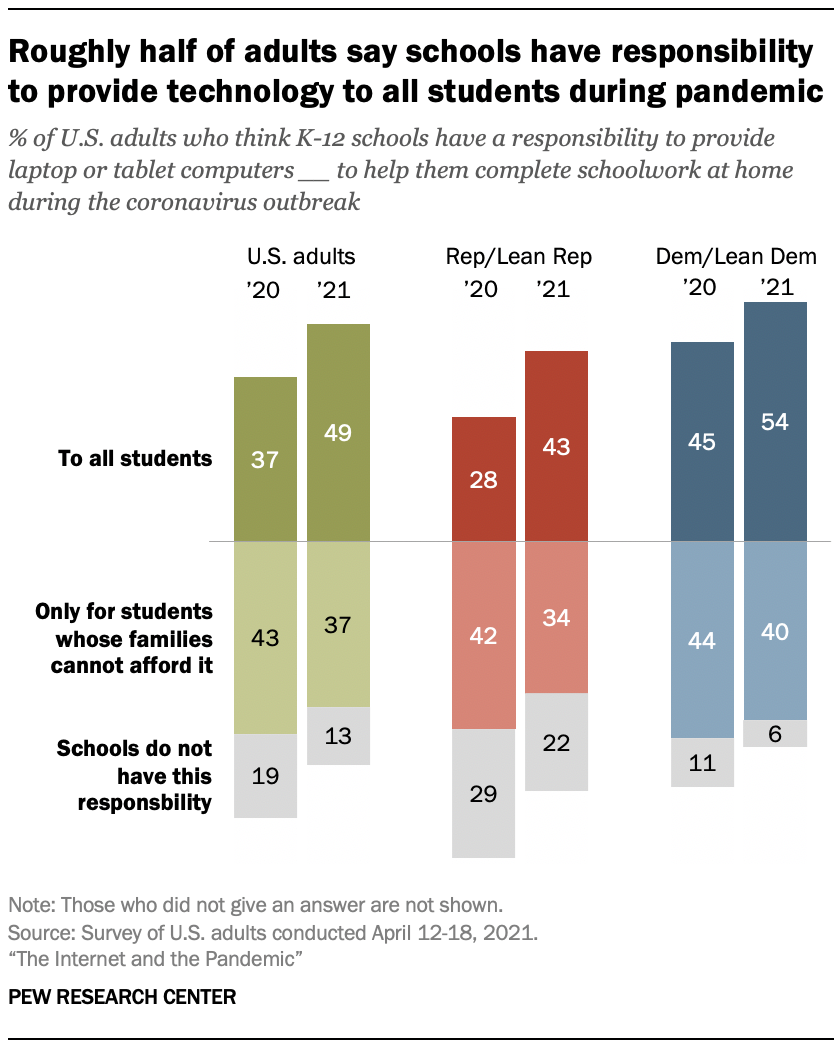
While larger shares of both political parties in April 2021 said K-12 schools have a responsibility to provide computers to all students in order to help them complete schoolwork at home, there was a 15-point change among Republicans: 43% of Republicans and those who lean to the Republican Party said K-12 schools have this responsibility, compared with 28% last April. In the 2021 survey, 22% of Republicans also said schools do not have this responsibility at all, compared with 6% of Democrats and Democratic leaners.
Even before the pandemic, Black teens and those living in lower-income households were more likely than other groups to report trouble completing homework assignments because they did not have reliable technology access. Nearly one-in-five teens ages 13 to 17 (17%) said they are often or sometimes unable to complete homework assignments because they do not have reliable access to a computer or internet connection, a 2018 Center survey of U.S. teens found.
One-quarter of Black teens said they were at least sometimes unable to complete their homework due to a lack of digital access, including 13% who said this happened to them often. Just 4% of White teens and 6% of Hispanic teens said this often happened to them. (There were not enough Asian respondents in the survey sample to be broken out into a separate analysis.)
A wide gap also existed by income level: 24% of teens whose annual family income was less than $30,000 said the lack of a dependable computer or internet connection often or sometimes prohibited them from finishing their homework, but that share dropped to 9% among teens who lived in households earning $75,000 or more a year.
